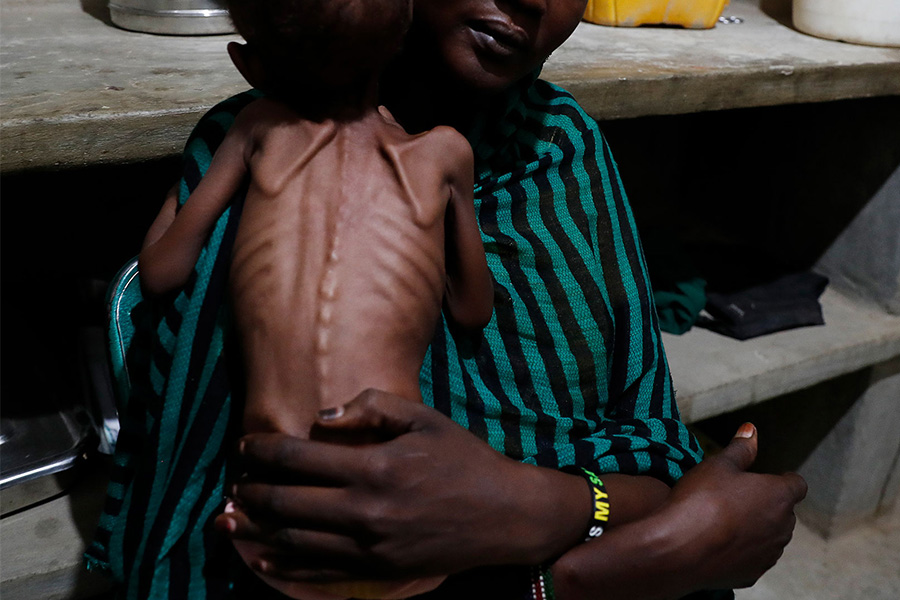We Communicate For Happy Children
 Sudan Children in the Heart of Famine and Death
Sudan Children in the Heart of Famine and Death 
Prepared by the Media and Communication Department at the Arab Network for Early Childhood
31 January 2025
Last update 17 February 2025
As the war in Sudan approaches the completion of its second year and while the conflict is still raging in light of military developments during the recent months, the tragic situation of children and families continues to worsen at various levels.
Children and families are suffering from catastrophic humanitarian conditions, from high numbers of dead and wounded in attacks, the spread of famine and diseases, the lack of clean water, the collapse of the health sector, the expulsion of millions with the country suffering from the largest child displacement crisis in the world, down to the education crisis, sexual violence, gender-based violence, and the widespread recruitment of children soldiers.
Insufficient food and lack of education
The conflict has devastated the lives of 24 million children. With the escalation of fighting and the horrific attacks on children, most recently in South Kordofan- Omdurman and the Saudi Hospital in El Fasher, North Darfur- it has become difficult to count the thousands of child victims. As the conflict spread into new areas between June and December 2024, UNICEF reported more than 600 incidents of grave violations against children. “A staggering 80 per cent of them were accounts of killing and maiming, primarily in Darfur, Kordofan and Khartoum States.”
Sudan is also the only place in the world where famine has currently been confirmed. This makes it one of four famines confirmed in the past 15 years, following Somalia in 2011, South Sudan in 2017 and 2020, and Sudan in 2024.
The most troubling is that the famine crisis is expanding and spreading at historic levels, according to the description of international organizations, with a significant increase in cases of malnutrition, especially among children. According to the Integrated Food Security Phase Classification (IPC), famine is currently spreading in at least five areas: Zamzam camps that contain 500,000 displaced people, Abu Shouk and Al Salam in North Darfur, in addition to host communities and displaced persons camps in the Western Nuba Mountains. Five additional areas will face Famine between December 2024 and May 2025 with the same risk in 17 others.
According to the same classification, half of Sudan’s population is facing high levels of acute food insecurity, which represents an unprecedented exacerbation of the food and nutrition crisis. In this context, UNICEF estimates that 770,000 children under five will suffer from severe acute malnutrition, in 2025, emphasizing “how critical it is to reach them with timely, lifesaving care”.
At the end of January 2025, the World Food Program warned against obstructing humanitarian efforts as it was trying to expand its operations and has already reached areas it was previously unable to reach. This comes as Sudan suffers from an economic collapse, a severe disintegration of basic social and community services, and weak access to humanitarian aid.
The first official declaration of famine in Zamzam camp in August 2024 was preceded by a warning from international organizations, most notably UNICEF, declaring in March 2024 that “children cannot wait for the world to deliberate whether famine is underway in Sudan. They urgently need help right now.”
Statements issued by children’s organizations about the famine in Sudan are consistent with those issued during the genocide in Gaza, which warned that children’s death from starvation is avoidable. This indicates that the conditions of children in crisis and war zones are similar despite the different the geographical scope. According to “Save the Children”, Sudan children are the first victims of famine and are indeed facing painful deaths that could be avoided. Mothers’ malnutrition also poses a threat to their health, and this requires immediate intervention.
In addition, there are currently 17 million children in Sudan out of school, and this is the worst education crisis in the world. The war has compounded the deterioration of the education sector already suffering for decades. It has prevented children from achieving their right to education as schools have been transformed into shelters. Failure to reopen schools safely will threaten Sudanese society for decades, creating a huge gap among children, and most seriously, losing an entire generation. On the other hand, children are exposed to unprecedented levels of sexual violence and widespread recruitment, with devastating consequences.
Forgotten Children
Despite the growing tragedy and the fact that children in Sudan are “breaking records” worldwide, their rights and their causes are almost forgotten, not receiving the required media coverage, and lost amidst double standards. The concerted efforts of early childhood institutions, joint investment of resources, and unification of strategies are all crucial factors in protecting Sudanese children from increasing risks at the levels of health, education, and psychosocial follow-up, in addition to protecting them from violence and exploitation. This is what they need most today.
